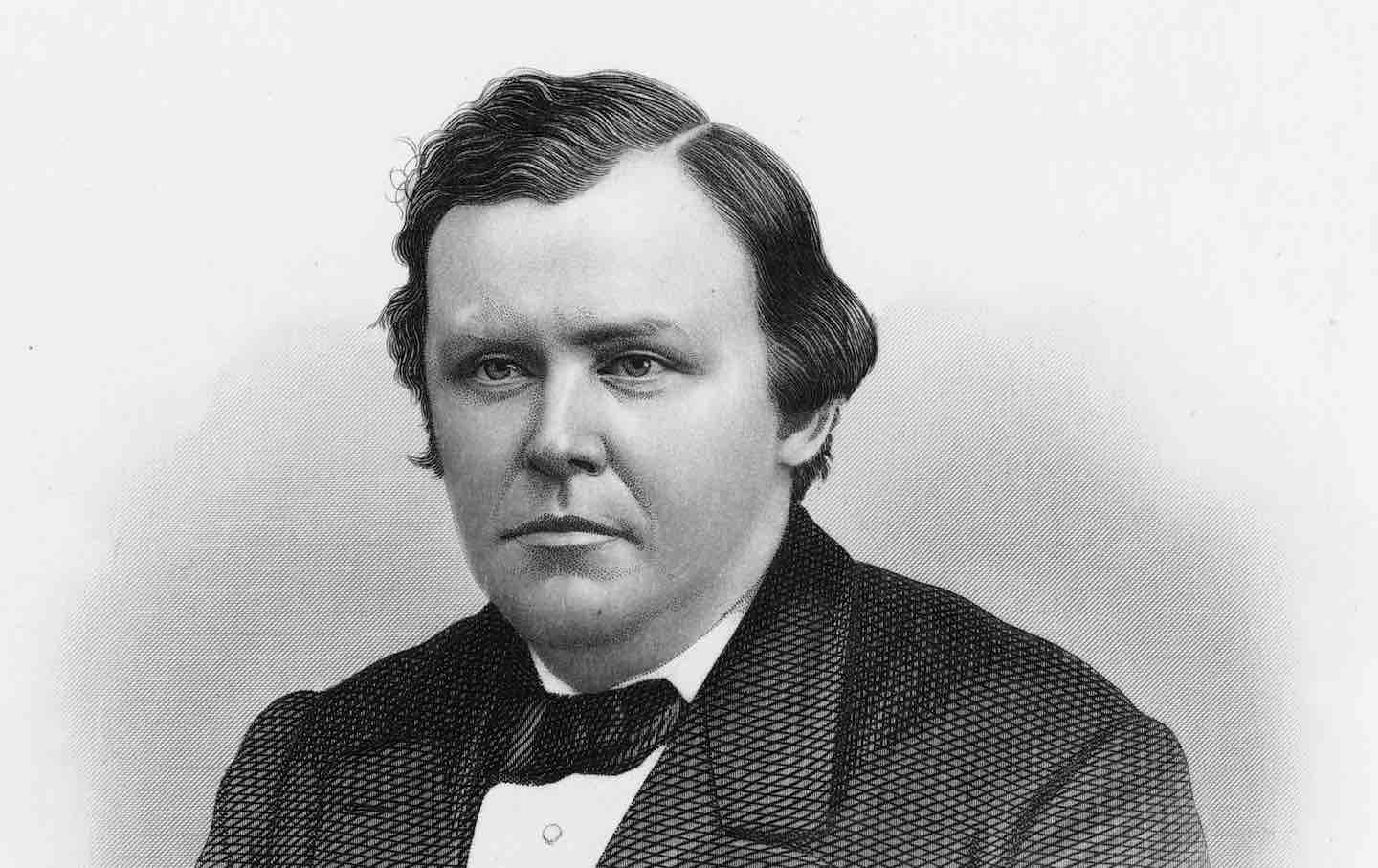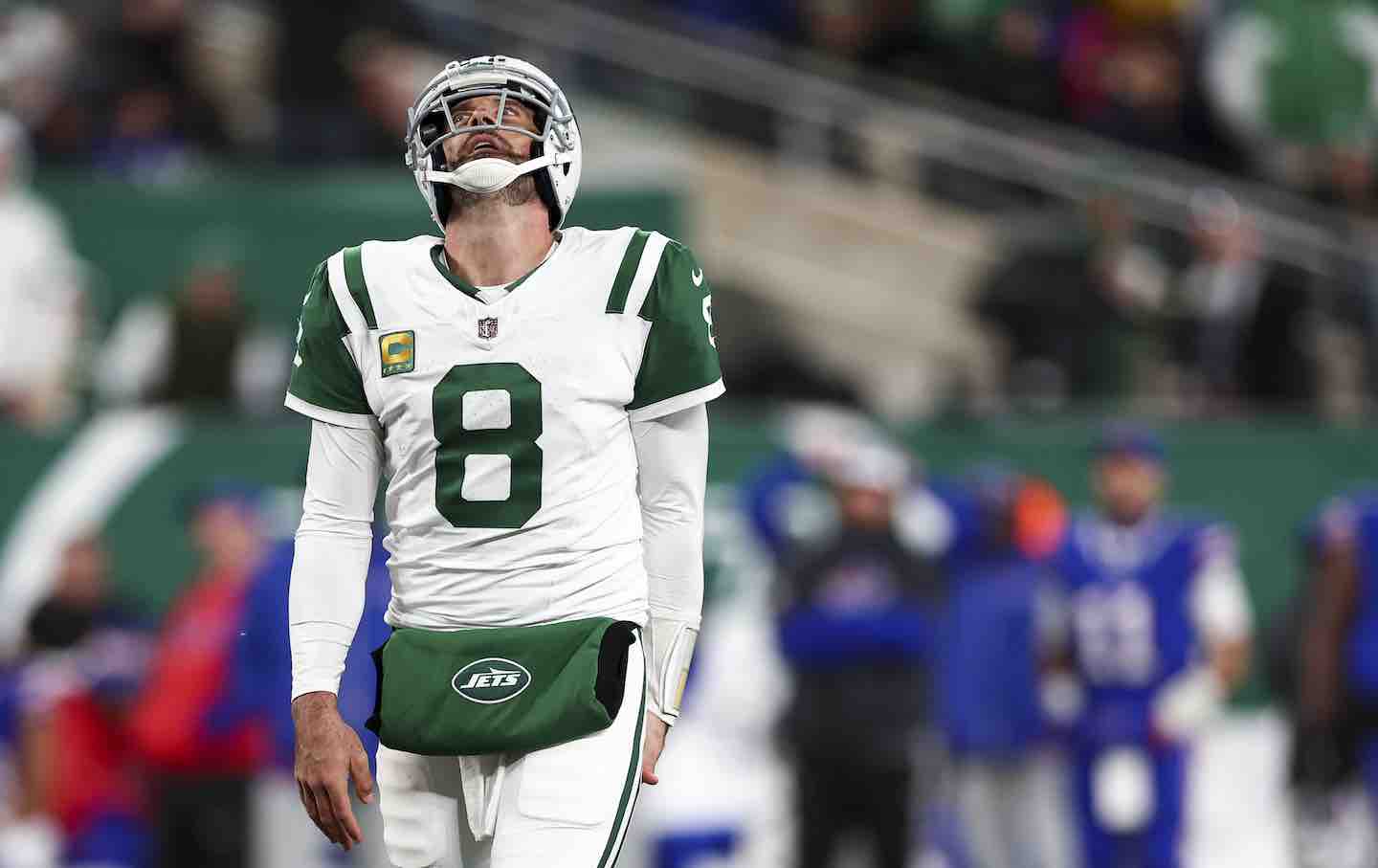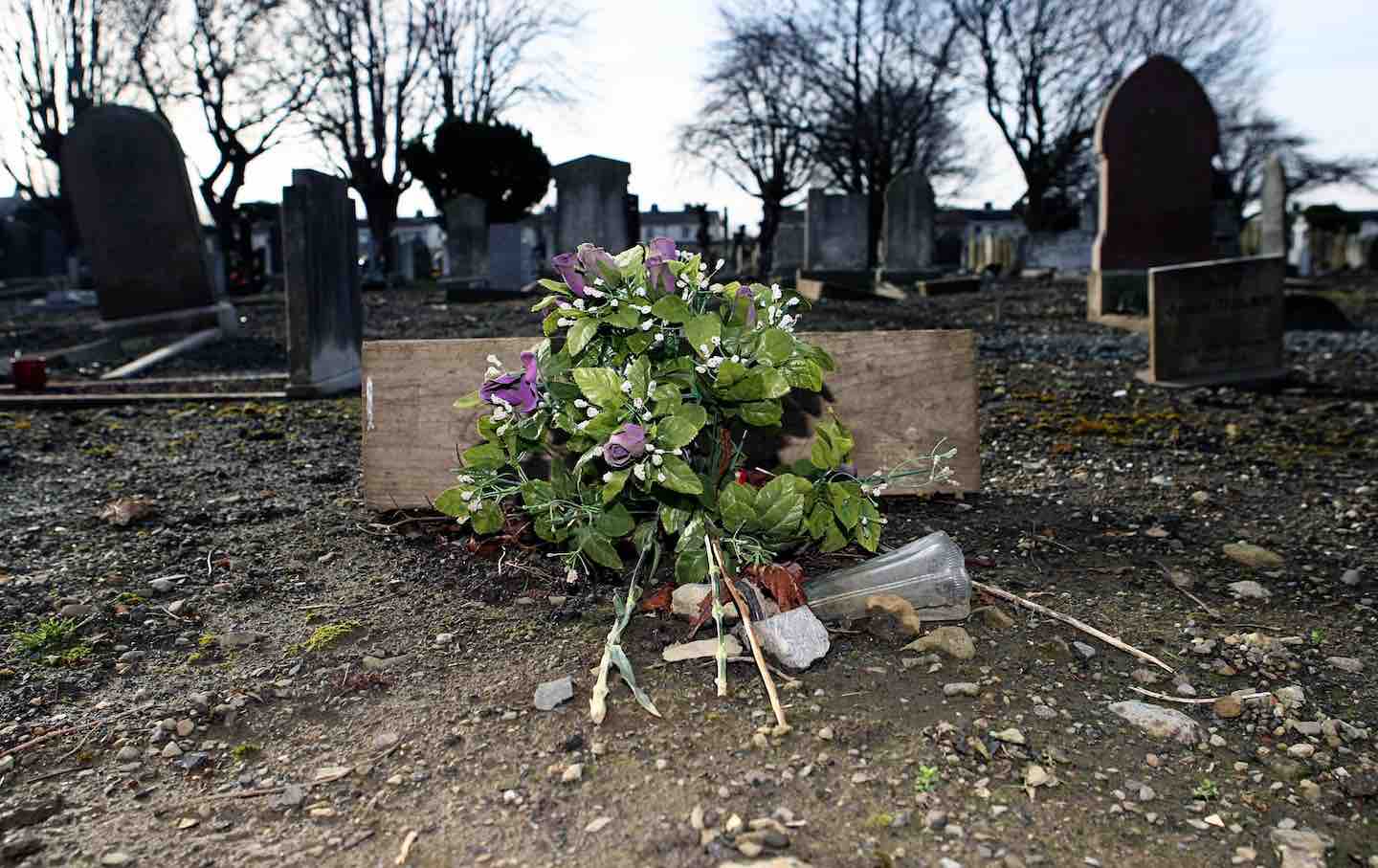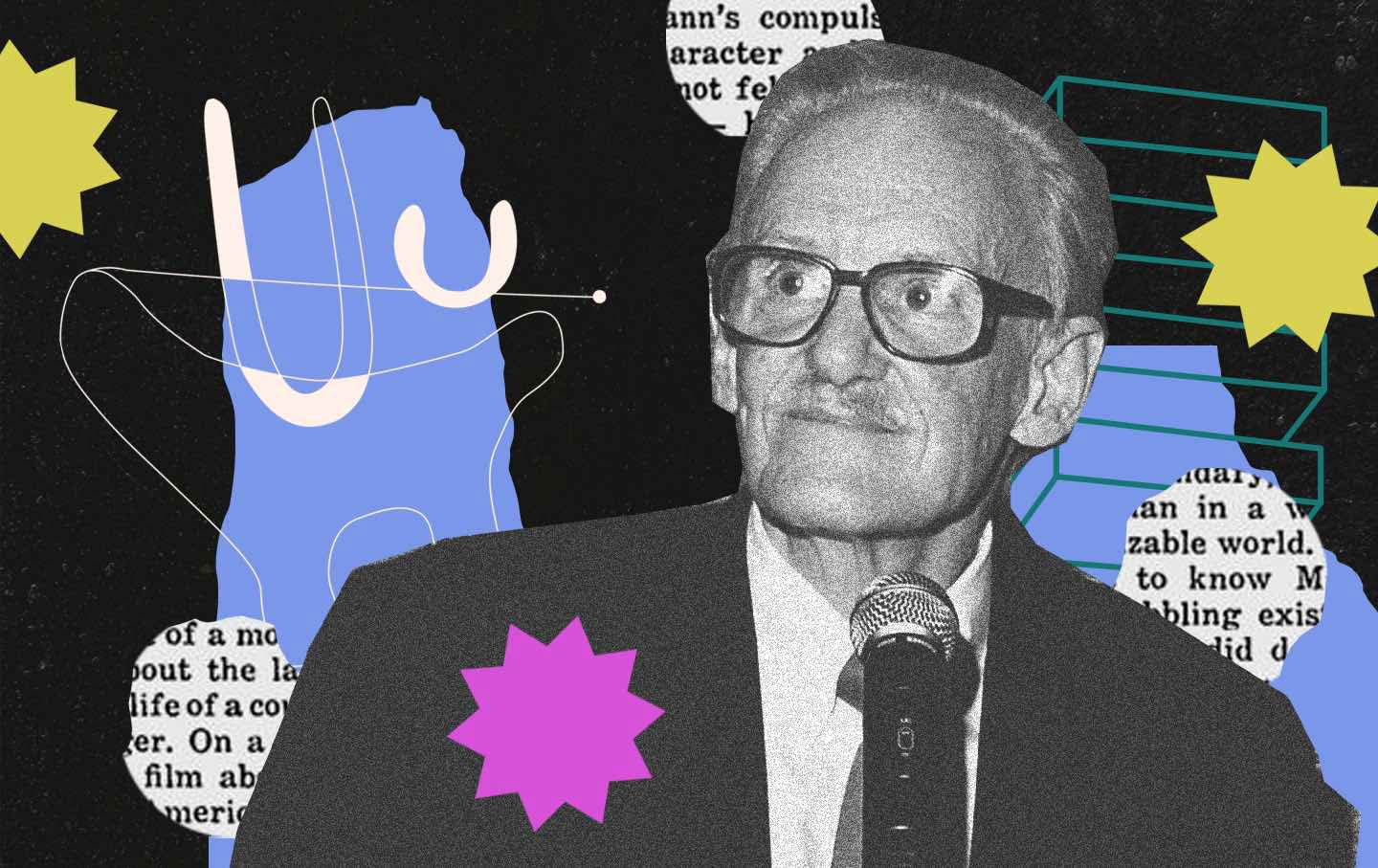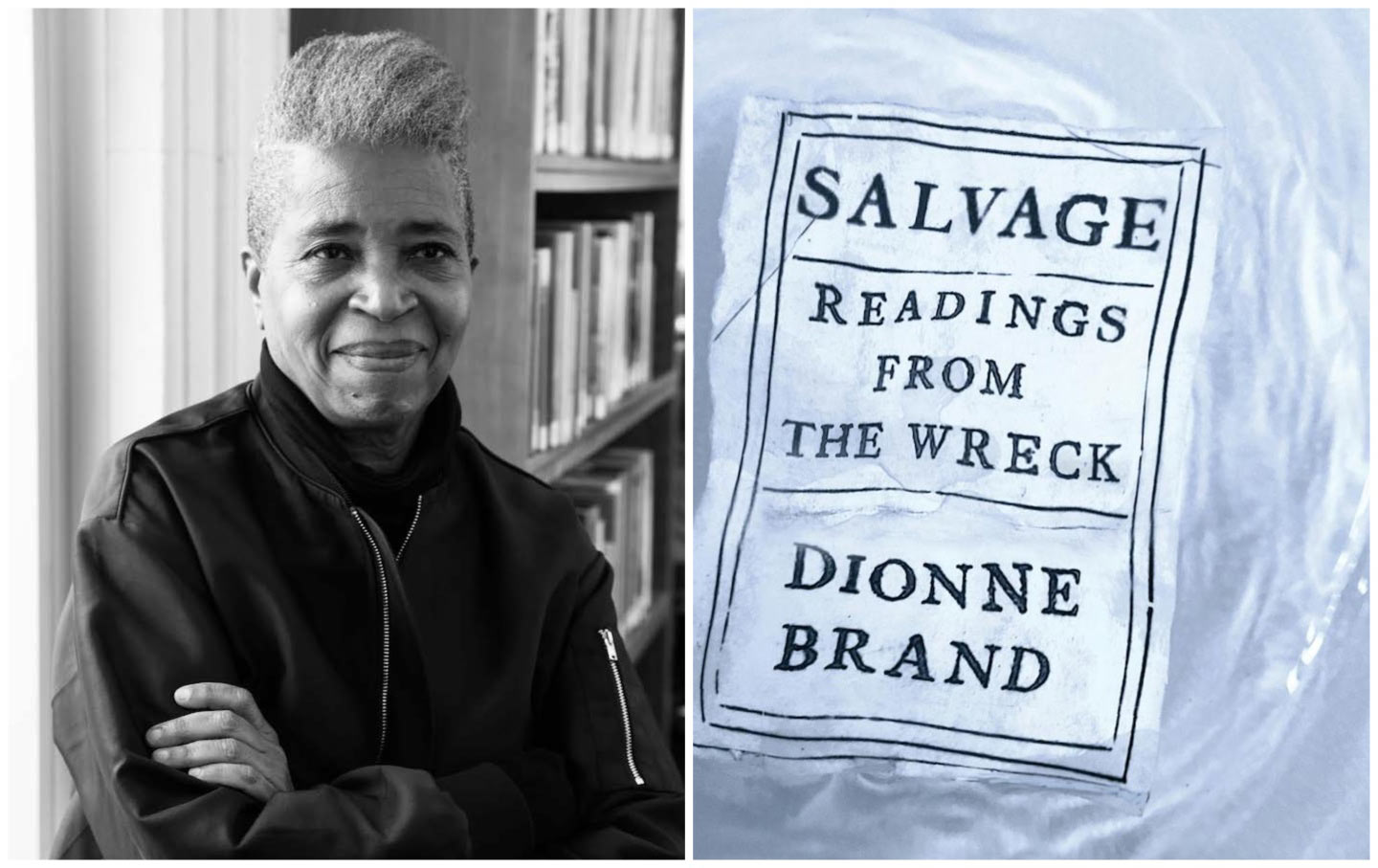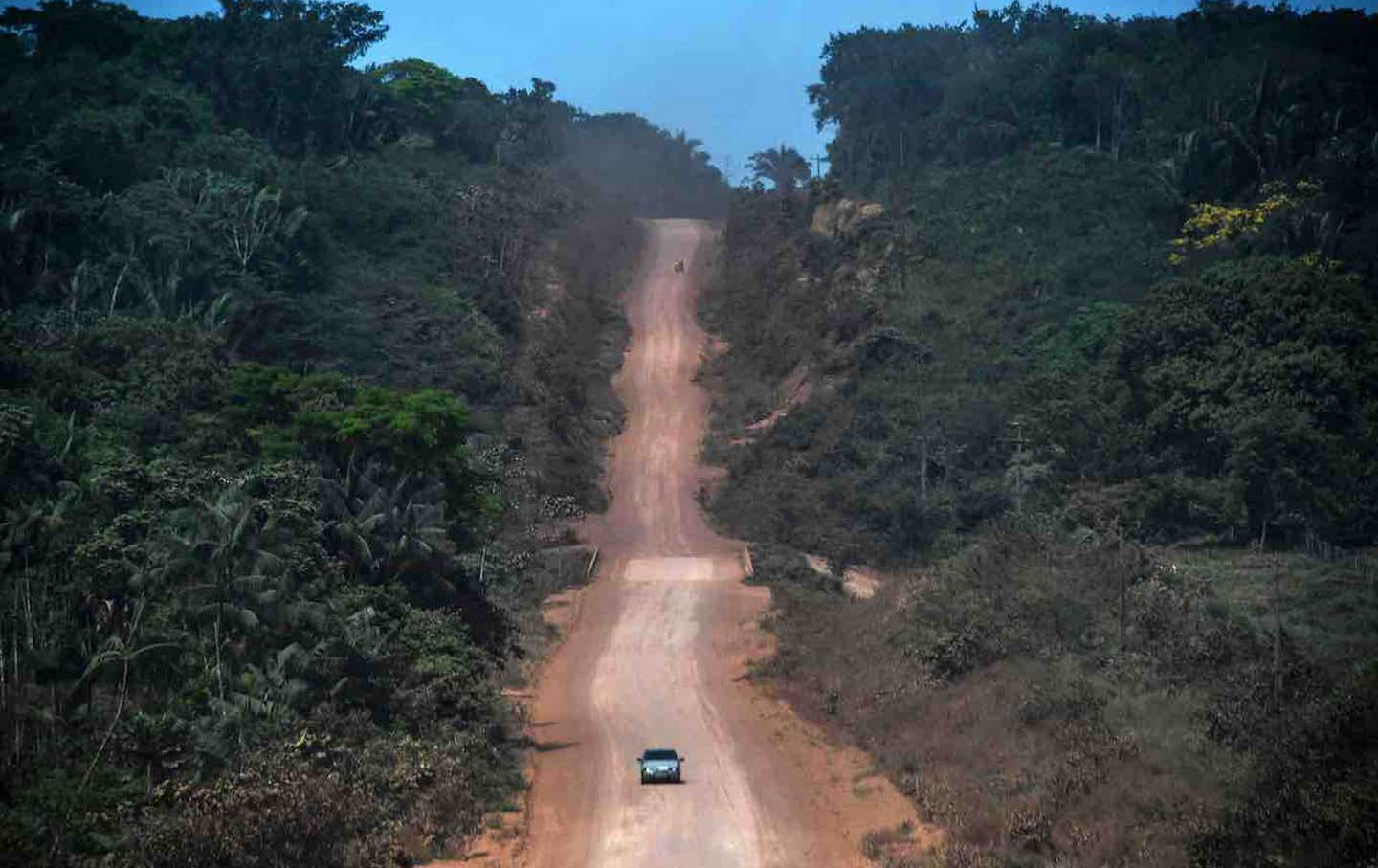In the Country of the Blind
A conversation with Andrew Leland about his provocative new book about vision loss, disability politics, and the ways in which blindness looms large in our cultural imagination.
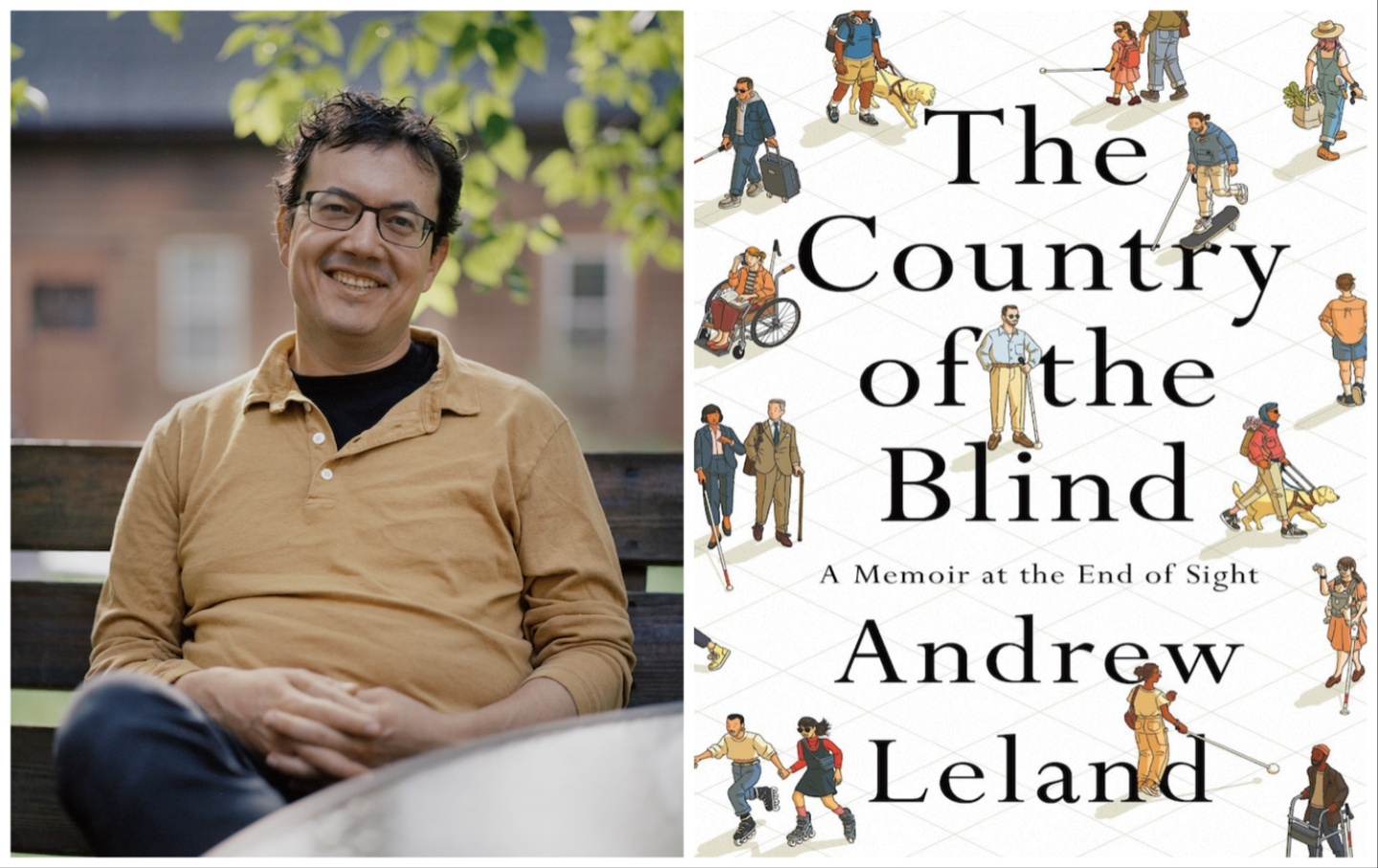
Like many other forms of disability, blindness can loom like a monolith in the cultural imagination. The tropes that linger about blindness range from awe and fascination to fear and pity. They often reinforce persistent binaries: between light and darkness, between insight and irredeemable loss, between seeing and not-seeing. Think of the blindness of Tiresias, Homer, Milton described as a source for their preternatural insights, counterbalanced against figures like Oedipus and Gloucester, whose blindness is often described as a form of exile and punishment.
In his new book The Country of the Blind, Andrew Leland considers blindness but from the far more granular (and far less classifiable) position of progressive vision loss, an experience which he describes as being “not quite blind and not quite sighted.” Leland, a journalist and radio producer who was diagnosed with retinitis pigmentosa over two decades ago, writes compellingly of his ever-shifting relationship to vision, as well as to other human beings and to the world around him. He also takes his advancing blindness as an invitation to plunge into the rich and varied world of other blind people: into “the country of the blind,” as H.G. Wells described it in his 1904 short story. The book that results is a provocative blend of memoir, reporting, and cultural commentary, as Leland narrates the complexities of acquired disability alongside the wider histories, politics, and innovations of his blind compatriots.
Leland is among a rising generation of journalists shifting the ways we write about disability experience. His web feature for The New Yorker about Protactile, an emerging language that has revolutionized how DeafBlind communities communicate with each other, won the 2023 Linguistic Journalism award from the Linguistic Society of America. His other writing has appeared in The New York Times Magazine, McSweeney’s, and the San Francisco Chronicle, among others. He has been an editor at The Believer since 2003, and he has also produced radio pieces for the podcasts Radiolab and 99% Invisible.
I spoke to Leland over email, which we’d discovered was an optimal way to converse across our different subjectivities, my sighted Deaf sensibility and his hearing blind one. This interview has been condensed and edited for clarity.
—Rachel Kolb
Rachel Kolb: You begin this book by describing yourself as “an accidental, curious, and sometimes wary visitor” to the strange yet beautiful country of blindness. At what point in your career did you start to embrace disability and writing from this perspective? Did you fall accidentally into it, or did it emerge more organically?
Andrew Leland: I had to wait until my blindness progressed to a point that felt worth writing about. Twenty years ago, I still drove during the day; night-blindness was unusual, but ultimately it didn’t seem to raise any larger questions or ideas for me. About six years ago, however, my vision had eroded to the point that I was finally using a cane whenever I left the house. This decision transformed the way everyone—from strangers to close friends and family—related and responded to me. Previously, I’d been a sighted person with a few odd needs that felt more like affectations: I didn’t drive, I sometimes left people hanging for handshakes or high-fives. Not exactly rich philosophical territory. But this new phase couldn’t be waved off as an affectation, and fundamental aspects of my life felt like they were transforming before my eyes: Around the same time, I gave up reading print, and without the cane, I found that I could get myself into serious trouble if I was out on my own. Suddenly blindness felt very close as a subject, even if, in many ways, I was still an outsider, because of the vision I still had, and the unfamiliarity of the whole world of disability.
From the beginning, though, I never wanted to write about my vision loss as a subject in and of itself—I wanted it to be a vehicle toward larger ideas. I started to take scraps of my new life as an increasingly blind person—the difficulty of learning braille, or the pain and outrage I felt hearing someone on the street accuse me of faking my blindness—and tried to write my way from those experiences into the bigger world of disability, media, politics, culture, and so on, to see how it connected and fit. I published a few pieces that took that approach, and right away it seemed clear that this was a generative way of dealing with my vision loss: New angles kept presenting themselves, and readers and listeners seemed interested in following me to these new places, from Stevie Wonder truthers (online conspiracy theorists convinced that Wonder is faking his blindness) to the pre-braille history of writing systems for the blind, or debates over disability representation on TV.
RK: How did those earlier pieces of reporting inform this book project as it developed? And how did you select the topics that felt most promising or intriguing?
AL: I was largely guided by my own interests, which preceded—and informed my approach to—blindness. I’ve always been interested in how media works, obsessing over questions like, How do we understand a text differently when we encounter it as sound—as in radio—versus in a visual medium, such as print? When I encountered scholars like Georgina Kleege, Mara Mills, and Matthew Rubery, who work at the intersection of media or literary studies and disability studies, a light bulb (or, perhaps, a resonant chime) went off in my head; the questions that I’d been pursuing for years suddenly felt intimately bound up in what I was going through physically. The academic question of how reading changes in different modalities (through the eyes, the ears, or the fingertips) was urgently present in my daily life. Blindness and disability, it seemed, were valuable, productive, and expansive fields of inquiry.
In figuring out the contours of my book, I was also guided by the demands of blindness itself. Pretty much any blindness training or rehabilitation center is going to have a similar set of offerings, based on the problems every blind person must solve to survive: orientation and mobility (e.g., cane-travel instruction); tech (how to use a screen reader with a computer or phone); literacy (braille or audio); “techniques of daily living” (cooking, cleaning, shopping); and, usually, some kind of amorphous emotional-philosophical rehabilitation—a catch-all subject that addresses the vicissitudes of blindness’s impact on interpersonal relationships, identity, self-confidence, independence, isolation, mental health, and so on. This curriculum, in a way, became the blueprint for my book—each subject encapsulated a problem that blindness presented, that I had to confront in my own life, and that opened up the doors to fascinating stories and debates. Each category suggested a new field ripe for exploration: technology and interdependence; science, medicine, and ableism; race, gender, and identity; and on and on. Once I had that road map in hand, my primary challenge became how to use my experiences as a way to make these broader historical, reportorial, and critical interventions.
RK: I love thinking of this book as a curriculum of blindness, so to speak. If you had to pick one or two items on that curriculum that surprised or challenged you most, which would they be?
AL: The parts of the book where I tried to think through the analogies between blindness and other identities gave me the most trouble. Before I began researching and reporting, I assumed that becoming blind would marginalize me in some fundamental way, and that, to simplify a little, I’d soon find a sympathetic coalition of disabled people who would embrace me and we’d fight the forces of systemic ableism together. But the question of how my privilege (economic, racial, and so on) intersected with my disability proved far more complicated than I’d originally anticipated, and I discovered that the world of disability activism itself was fractious in ways that continue to confound and fascinate me. It was naïve of me to expect otherwise—there is no identity group that speaks with a single voice and privilege—like marginalization—doesn’t operate on a neat sliding scale either.
The two largest blindness consumer organizations in the US, the National Federation of the Blind (NFB) and the American Council of the Blind (ACB), for instance, have been at war with each other for decades, often over basic questions of what sorts of accommodations a blind person needs (accessible currency, audible pedestrian signals), and what image of blindness those accommodations project to the sighted world. I was also shocked by the schisms I found between blindness organizations and other disability groups—the way that blindness groups seemed particularly resistant to forming cross-disability coalitions, most dramatically, perhaps, in the NFB’s resistance to the ADA when the law was still being drafted. More recently, I was compelled by the sharp critique that the intersectional disability-justice movement makes of mainstream disability-rights activism, and its rejection of (in the words of the brilliant Leah Lakshmi Piepzna-Samarasinha) “the spaces where a white-dominated, single-issue, civil rights approach that depends on the ability to use lawsuits to achieve disability liberation leaves many of us behind.”
These are all issues I still struggle with. I consider myself an ally of anyone with a disability, but I don’t wear a mask everywhere I go anymore, which sometimes makes me feel like a traitor to the cause: If I expect everyone to write alt text for the images they post online, for instance, isn’t it even more important to expect everyone to wear masks in public to protect the chronically ill and immunocompromised? Or are these both hopelessly idealistic goals?
RK: The question of accommodation is so central to modern-day disability experience, so I’m curious to know more about the ways you’ve adapted to your unfolding blindness as a reader, writer, editor, and producer. Your book contains several moments where you reflect on your own process of writing it. What has this process come to feel like to you?
AL: I’m still very much in a transitional phase between sight and blindness—I have enough vision that I can still read text visually, but it’s increasingly more trouble than it’s worth, so I prefer listening if I’m going to be reading or writing in any concerted way. But this line is quite blurry: I’ll badly strain my eyes reading a deeply frivolous text on the Internet, but I can’t parse a single line of a legal document without turning on my screen reader. There are cognitive and psychological dimensions to my multimodal experience of reading that I am only just beginning to be aware of.
When my vision weakened while I was revising my book, it was difficult, but in retrospect, I barely missed a beat, because of all the preparation I’d been doing. It could have been disastrous, but I’d been training myself on how to use a screen reader, which over the course of about a year almost imperceptibly shifted from an obscure assistive technology I practiced out of a sense of duty to a tool I know I wouldn’t have been able to finish the book without.
I did have to work through a great deal of anxiety about this transition, however. My voice as a writer, and sensitivity as a reader, felt inextricably tied to the silent voice I hear in my head when I write and read. Wouldn’t that voice be distorted by the Soviet-robot-sounding screen reader that had taken over as the narrator of nearly everything I read and wrote? But as with so many adaptations to blindness, the voice soon lost its exoticism, and I found that I was up and running again pretty quickly, comfortably following the hyper-speed babble of the synthetic voices I now use to navigate my textual universe.
RK: I’m struck by your description of this silent voice you hear in your head while reading and writing. Has the nature of this inner voice changed, now that you’ve become accustomed to encountering text in a wider variety of ways?
AL: I’ve always been interested in the materiality of literature: the way a sentence appears dignified in an elegant typeface like Garamond, printed on deckled, acid-free paper, and how much harder it is to take that same sentence seriously when it appears in the tray of a cheap laser printer in 30-point Comic Sans. I’ve found that as I adapt to my new life as a blind (or low-vision) reader, there are similar dynamics at play, just translated into new modalities. I prefer reading most literary fiction as audiobooks, read by a human—I tried reading Toni Morrison’s Beloved with my Text to Speech (TTS) software, for instance, and I could barely follow it. But when I downloaded a recording of Morrison herself narrating, the novel came alive. And I strongly prefer reading nonfiction prose—even pretty dense scholarly books—with TTS. That kind of book I tend to turn the speed of the synthetic speech up quite high, to burn through the sections that I’m less interested in, and slow down when I find what I’m looking for.
I recently learned that I could get a hardcopy braille subscription to Poetry magazine from the National Library Service, and it’s been a revelation—not just the experience of reading poetry in braille, which is infinitely better than having my computer, which ignores line breaks, read it to me—but also just the pleasure of holding a magazine in my hands again, turning the pages in bed, physically marking my place as I drift off to sleep. I didn’t realize how much I’d missed that until it came back into my life.
RK: Our own conversation here has been quite a multimodal one, conducted over e-mail between Deaf and blind subjectivities and uses of technology and language. So I’m curious to return to that issue of cross-disability solidarity: how has writing this book shaped your understanding of disability community? Or the possibilities (and politics) of human interconnection?
AL: As I wrote the book, and immersed myself in various blind communities, I felt a deep solidarity and pleasure in meeting people who shared my experience, many of whom offered me models for how I might live a more joyful, productive, ordinary life as a blind person. But I also sometimes felt a nagging sense of distance and rejection, both from myself and from others. I think this came from a lingering ableism that I’m still working to identify and untangle within myself: it was easy for me to feel kinship with the hip blind intellectuals I met, but when I met a blind man with a developmental disability, for instance, it shook my burgeoning sense of blindness as an intellectual condition, a Borgesian “style of living.” This dialectic, between connection and kinship on the one hand, and discomfort, pity, and alienation on the other, as ashamed as I was of experiencing it, ended up bringing me closer to the questions at the heart of the book, and of my journey toward understanding what it means to be blind or disabled. I tried to force myself to have empathy not just for the blind guy with a developmental disability but for the part of myself that felt uncomfortable around him.
There is plenty of ableism within disability communities; I found a great deal within the worlds of blindness. I’ve heard some people in the community refer to “vanilla blindness”—where blindness is one’s only disability; the vanilla blind tend to be centered in conversations about blindness, excluding and marginalizing blind people who also have mobility or intellectual disabilities, are autistic, Deaf or hard of hearing, chronically ill, and so on. This idea of the ableist disabled person suggests a tension that I think is crucial to understanding disability’s relationship with the non-disabled world. This was a tension I felt strongly while writing the book: I was pursuing all of these narrow blindness-specific threads, but I had an obligation to keep the book relatable to a non-blind, non-disabled reader—someone who in fact might not think they care that much about disability at all. How to make these ideas resonate for them? Sometimes I wanted to argue that it’s an ableist notion that every experience of disability needs to offer a lesson for the non-disabled person. But I also kept observing what I thought were universal experiences from deep within the narrow world of blindness.
RK: Now that you’ve written this book, what are you hoping a non-blind, non-disabled reader will take away from it?
AL: I want the reader to come away from the book with the buzz of negative capability: convinced of two contradictory notions, each of them true. On the one hand, the story of blindness has a great deal to teach us—about adaptation, problem-solving, coalition-building, and how we know the world. But I also hope the reader comes away equally convinced that blindness is at its root a superficial difference—that while blind people have to deploy alternative techniques to navigate the visual world, this difference is ultimately incidental. I think the country metaphor is useful in this regard: What at first strikes one as an exotic, foreign land is ultimately recognizable as another region of our own, populated by citizens with the same swirl of desire, brilliance, prejudice, and imagination that we all share.
RK: What possible future projects, tidbits, and ideas are seizing your interest these days?
AL: : As an increasingly blind journalist, I’ve become obsessed with epistemological questions like: How will I report accurately on scenes and events without seeing them? Is a description offered by a source less reliable than the writer’s own direct observations? Is an earwitness as reliable as an eyewitness? And I’ve become fascinated by the ways that these questions seem to arise across disability. I’m convinced that the strategies and tools disabled people use to gain access to information have the potential to transform the way that everyone interprets and engages with the world. I’m eager to get to work on a project that tests that hypothesis.

